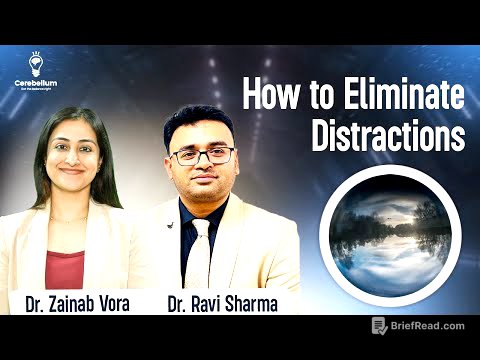TLDR;
The session covers health and diseases, focusing on communicable and non-communicable diseases, their transmission methods, and examples. It highlights the importance of understanding these concepts for NEET 2025 aspirants. Key points include modes of disease transmission like aerosol, fecal-oral, bloodborne, vertical, and vector-borne, along with examples of each. The session also touches upon non-communicable diseases such as cardiovascular diseases, cancer, chronic respiratory diseases, and diabetes, emphasizing their impact and causes.
- Communicable diseases spread through various modes like air, contaminated food/water, blood, and vectors.
- Non-communicable diseases are not infectious and include conditions like heart disease, cancer, and diabetes.
- Understanding transmission methods is crucial for preventing the spread of infectious diseases.
Introduction [0:02]
The session starts with a welcome to students for a zoology class focusing on health and diseases. The instructor, Dr. Anisha, addresses technical issues from the previous class and emphasizes the importance of focused study for the NEET 2025 aspirants. The goal is to utilise the class time effectively for exam preparation.
Definition and Types of Diseases [1:32]
The definition of health is reviewed, stating that it is not merely the absence of disease but a state of complete physical, mental, social, and emotional well-being, as defined by the WHO. The class revisits different types of diseases caused by pathogens like bacteria, viruses, fungi, protozoa, and helminths, providing examples such as tuberculosis and cholera for bacterial diseases, HIV and hepatitis B for viral infections, ringworm for fungal infections, malaria for protozoal infections, and roundworm and tapeworm infections for helminthic diseases.
Communicable vs. Non-Communicable Diseases [5:37]
The discussion moves to communicable diseases, which can transmit from one person to another, and non-communicable diseases, which cannot. The focus shifts to how communicable diseases are transmitted, outlining four broad methods: bloodborne, vector-borne, fecal-oral, and aerosol (coughing and sneezing).
Aerosol Transmission [9:36]
Aerosol transmission, occurring through coughing and sneezing, releases droplets containing millions of pathogens. When inhaled by a healthy person, these droplets burst in the respiratory tract, releasing the pathogens. The term "fomite" is introduced, referring to non-living objects with pathogens on their surfaces. Examples of airborne transmitted infections include COVID-19, pneumonia, diphtheria, common cold, and flu.
Fecal-Oral Transmission [15:01]
Fecal-oral transmission, also known as fecal transmission, occurs through contaminated food and water, leading to foodborne diseases. The fecal matter contains pathogens that can reach the body through fluids, flies, and unhygienic hand practices. Walking barefoot in contaminated fields can also lead to parasitic infections.
Bloodborne Infections [19:15]
Bloodborne infections transmit through blood and blood products. Methods of transmission include sharing needles, accidental punctures, infected body fluids, and blood-to-blood contact. Examples of bloodborne diseases are HIV, hepatitis B, and hepatitis C. Transmission can occur through blood transfusions, organ transplantation, needlestick injuries, from mother to fetus, and sexual transmission.
Vertical and Horizontal Transmission [28:48]
Horizontal transmission involves the spread of pathogens from one person to another within the same generation, while vertical transmission occurs from one generation to another, such as from mother to fetus. HIV is a crucial example of vertical transmission.
Vector-Borne Transmission [31:58]
Vector-borne transmission involves another organism (vector) to transmit the infection. A vector acts as a host where the pathogen completes its life cycle, other than humans. Examples include malaria (transmitted by female Anopheles mosquitoes) and filariasis (transmitted by Culex mosquitoes).
Non-Communicable Diseases [36:21]
Non-communicable diseases are not transmitted from one person to another and can be due to genetic factors, environmental conditions, or old age. Major types include cardiovascular diseases, cancer, chronic respiratory diseases, and diabetes. Other non-communicable conditions include hypertension, obesity, genetic disorders, autoimmune disorders, and allergic reactions. Cancer is highlighted as a major cause of death among non-communicable diseases.
Question and Answers [43:47]
The session concludes with a question-and-answer segment, testing the students' understanding of vector-borne diseases, fecal-oral transmission, and the location of the WHO headquarters. The students also answer questions about the definition of health, diabetes, and cardiovascular diseases. The instructor encourages students to stay focused and study hard.









